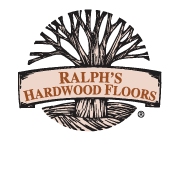As trees are harvested and milled into hardwood flooring planks, the way in which the wood is cut will greatly affect how the grain will look once the flooring is installed. So to achieve the look you're after, you’ll need to consider the sawing method used, as well as how wide and long the boards were sawn.
The Sawing Method
The technique used will have a considerable impact on the appearance of the wood’s grain. Most wood is “plain-sawn,” with logs being run through the saw lengthwise. This method produces the greatest grain variation between planks because the growth rings from the outside of the tree will be almost parallel to the edge of the board, while the rings from the inside of the tree will be almost at right angles to the edge.
If you prefer "straighter" grain rather than "swirly" grain, you can select a product that has been “quarter-sawn.” With this method, a log is first quartered, forming wedges with right angles to the center of the tree. Each quarter is then sawn from alternating flat sides of the wedge, resulting in planks that have well-aligned growth rings.
In the “rift sawn” method, logs are simply cut at right angles to the growth rings. This method produces the most-aligned grain possible, but it also wastes a significant amount of wood because of the wedges left over due to the geometry of the cutting—making this the most expensive method.
Size
The width and length of planks also affect the grain’s appearance. Boards are usually cut in widths ranging from 1 ½ inches to a foot, and the wider the width, the more noticeable the grain characteristics will be. Wide boards—which have become a trend—also can make a room appear “shorter,” causing large, open spaces to seem cozier.
Length usually ranges from a foot to 84 inches. Longer boards tend to have a more formal feel, while shorter boards create a more “busy” and “everyday” ambiance--although this is most obvious with flooring that has beveled edges because non-beveled flooring is sanded flat, making the short boards less conspicuous as it is more difficult to discern where the planks join together.
With both width and length, you can choose to use randomly sized boards, which can add visual interest and are more informal—as well as less expensive! For these reasons, random-length flooring is very common and random-width flooring is increasing in popularity.















